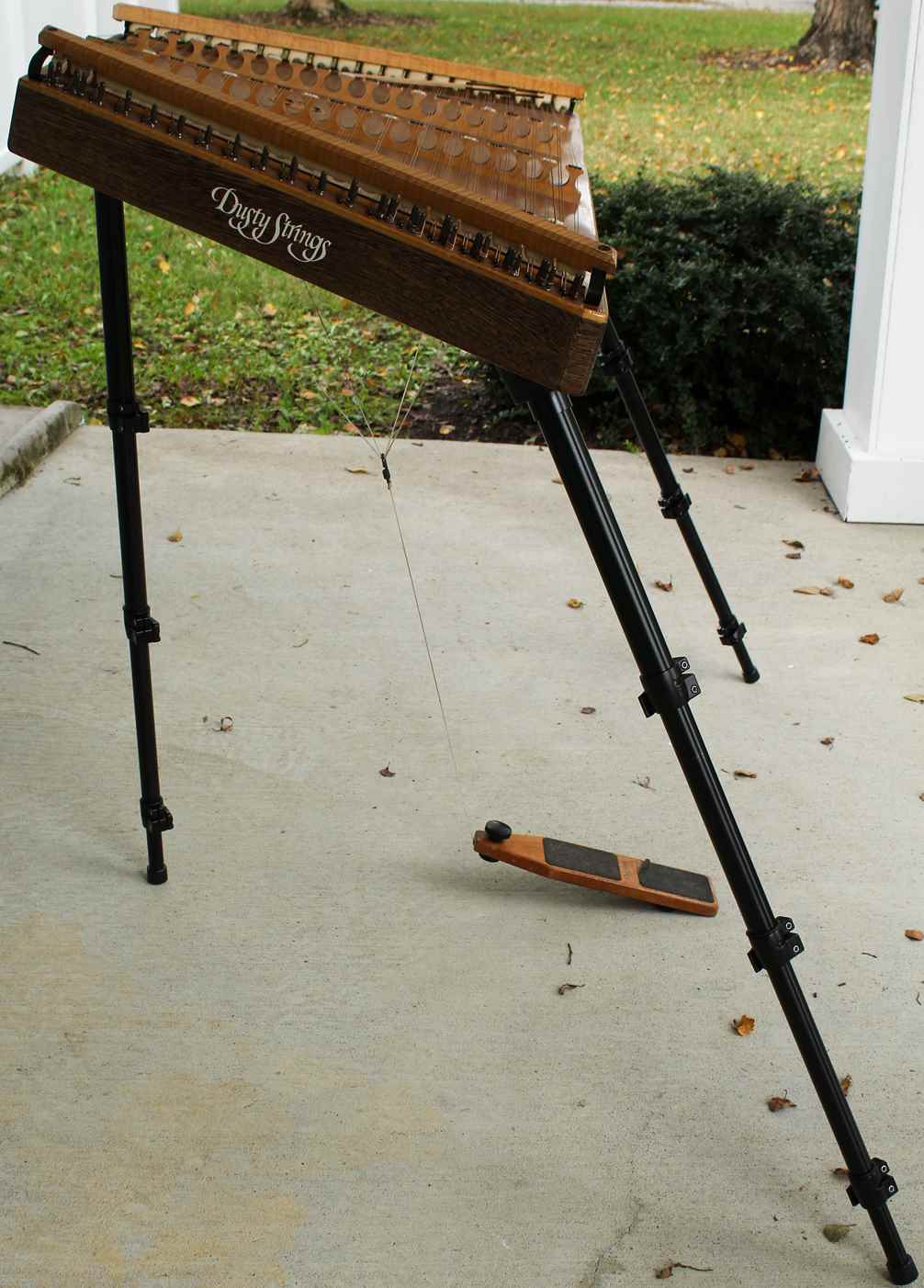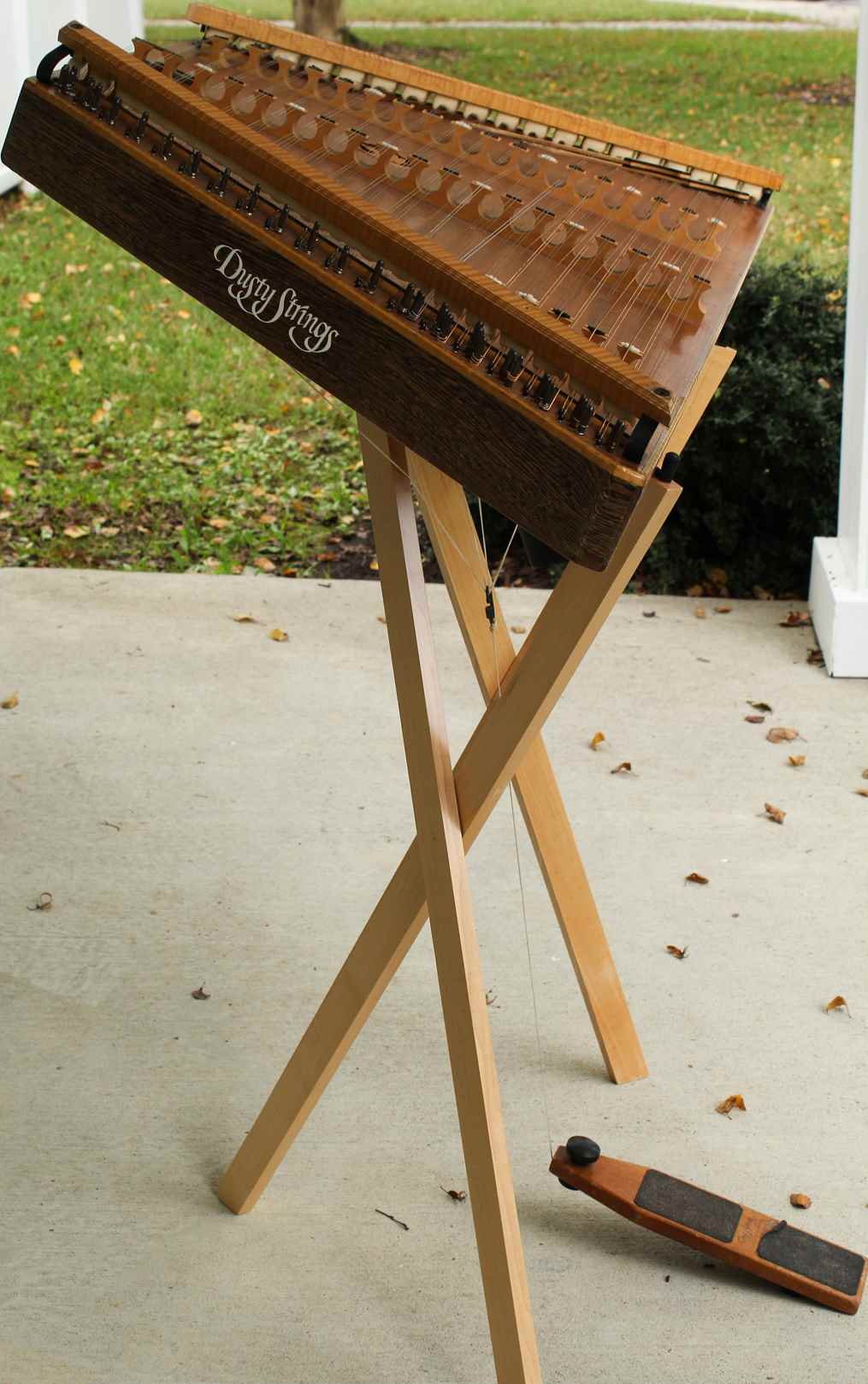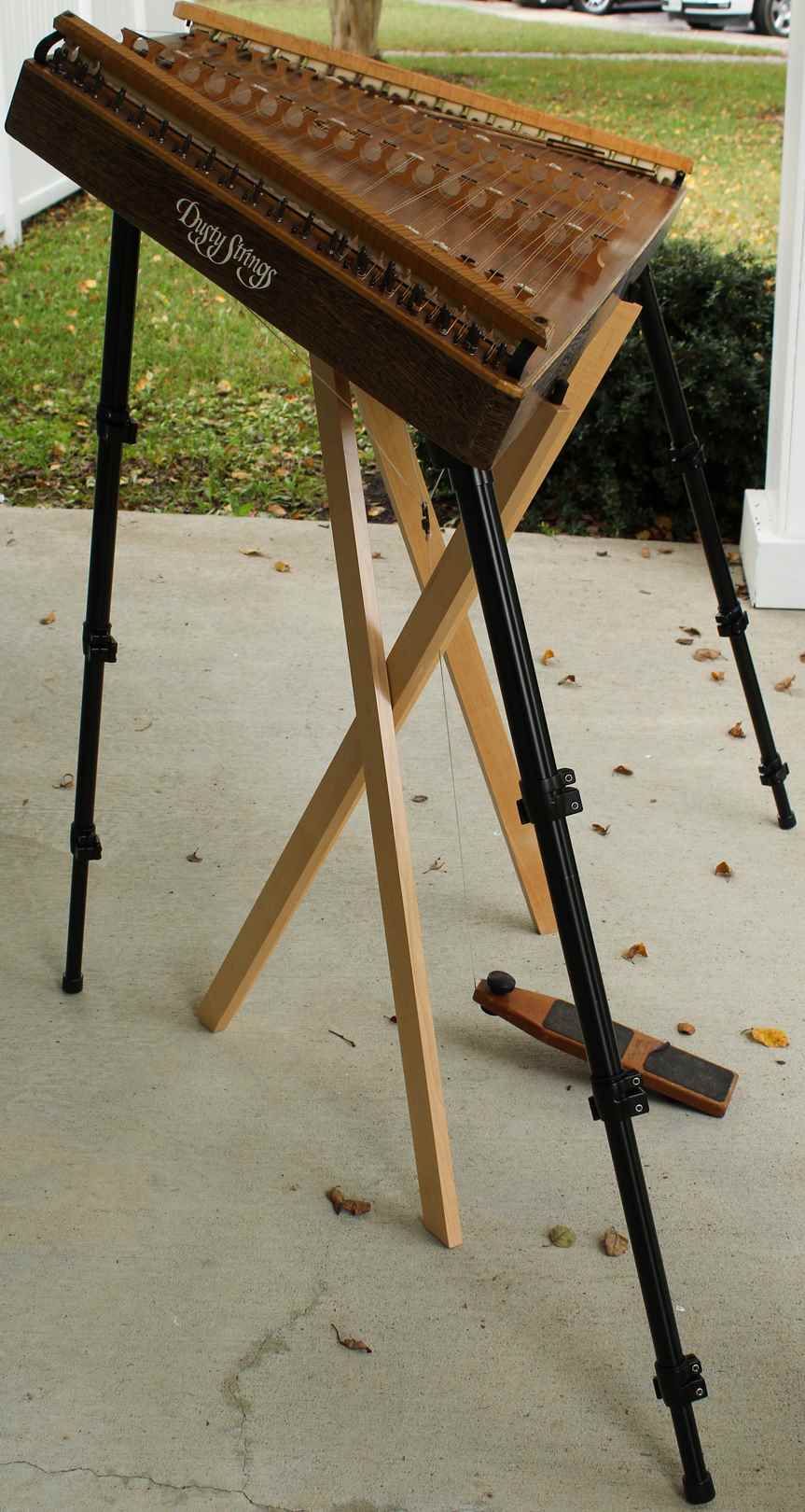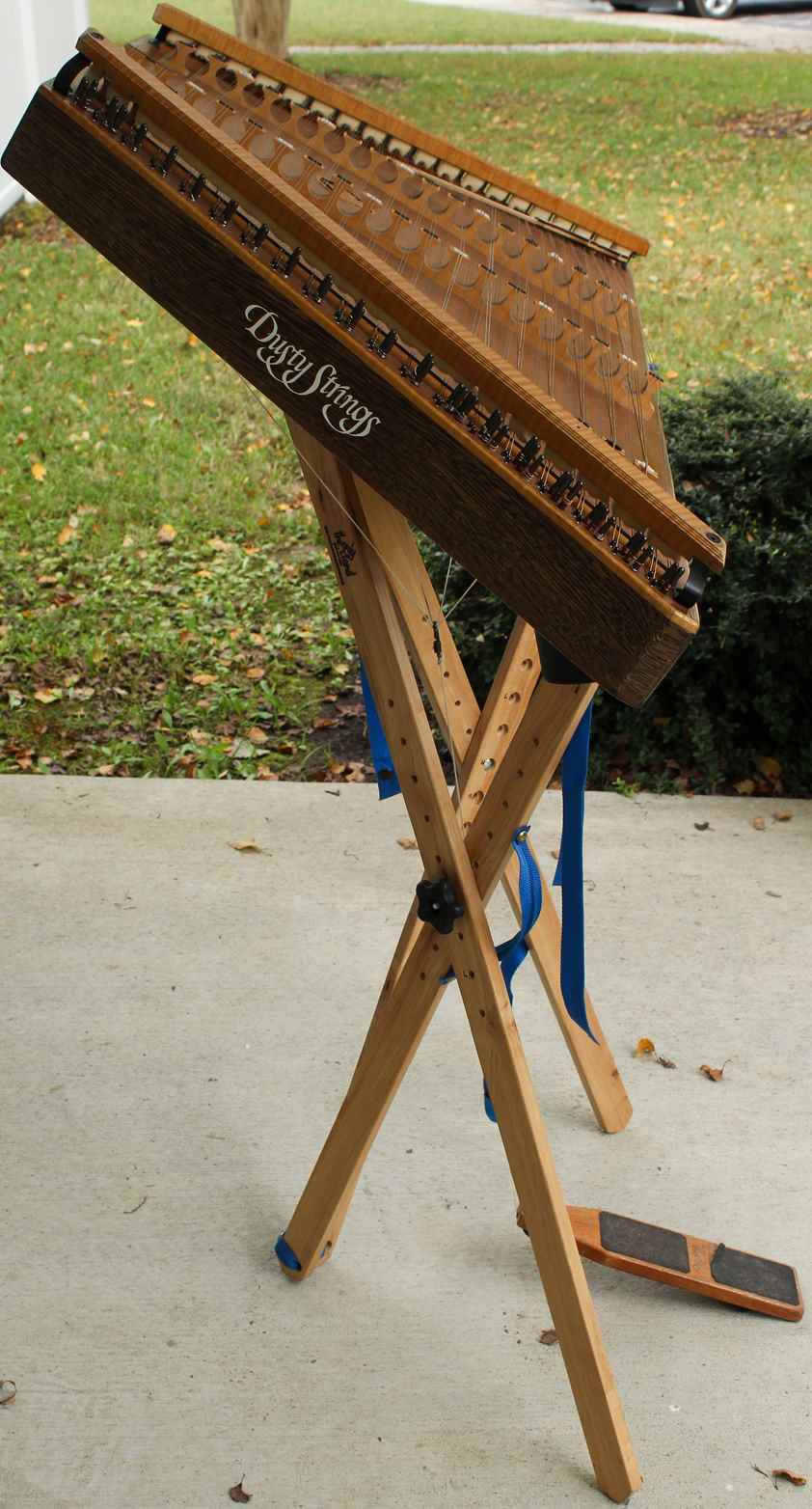Hammered dulcimer players often discuss the best steepness of angle the instrument needs to be for playing. There are some interesting factors that figure into this equation!
- How big is your dulcimer? If it’s big, like 3 ½ to 5 octaves in range, you might want to lean it pretty steeply so you can easily reach the high notes.
- Do you play standing up or sitting down? If you stand, it’s easier to have a flatter angle, since you can move on your feet to get the reach; if you sit, you have to move around from the small of your back and use your arms more than the rest of your body, and can reach more easily with a steep angle.
- Do you hover over your hammers, or do you stand up straight and reach from your elbows and shoulders mostly? Hoverers like me tend to need a bit steeper of an angle to easily lean over the notes --- but height helps too: I prefer for the whole dulcimer to be pretty high off the ground so my face can get close to my playing (and since I have relatively short arms), and so I don’t have to crouch to get the bridges’ lowest notes or hurt my elbows because of the funny playing position. Other players may see it just the opposite, though. What’s your approach?
But there’s another important factor involved here: gravity! Each angle has a significantly different relationship with gravity.
I imagine that drummers would tell us that a level drum is easier to play, because every time the stick falls it is fully under the influence of gravity, and the player’s hand has the least need to swing the stick downward*. The same is true of a hammer.  I find that the more level I can get my dulcimer, the easier it is to play quickly and accurately, since there is less swinging effort needed from my muscles. In this case at least, gravity is our friend!**
I find that the more level I can get my dulcimer, the easier it is to play quickly and accurately, since there is less swinging effort needed from my muscles. In this case at least, gravity is our friend!**
So I prefer to stand when I play, because with my hovering stance and desire to have the dulcimer high off the floor, I can get the instrument more level and can use gravity a bit more effectively for speed, ease, and accuracy. (And I can dance around as I play!)
In my particular case --- my own height and body type and preferences --- the Dusty Strings stand-up scissors stand is just right for both height and angle.  So if I want to use an adjustable stand such as the Dusty Strings TriStander System or Ron Jordan’s Only Stand You’ll Ever Need,
So if I want to use an adjustable stand such as the Dusty Strings TriStander System or Ron Jordan’s Only Stand You’ll Ever Need,  I set up the scissors stand and try to match the other stand’s adjustments to that position, then mark the places on the adjustable stands so I don’t have to do this process again.
I set up the scissors stand and try to match the other stand’s adjustments to that position, then mark the places on the adjustable stands so I don’t have to do this process again.
Am I being too picky? No, not at all! Working out the best possible balance among these important factors --- angle, height, playing style requirements --- makes it possible for me to actually play all day long without pain or cramps or fatigue, and to play my best and to lose myself in the music itself!

How’s your dulcimer’s angle doing?
*And of course the weight of the object and bounciness of the surface will make a difference, too.
**Dusty Strings makes a special mount for the TriStander System called the FlatLander so it’s easier to keep things stable when playing on the level.